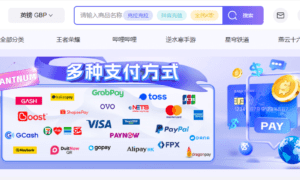The world that businesses are operating in is currently characterized by speed and security. The new technology of digital transactions can no longer keep up with the traditional corporate cards and manual expense processes. Slow card issuing processes, the inability to monitor expenditure and increased fraud risks present the major problems to financial departments.
Virtual cards are emerging as an effective solution to these issues. They are redefining the way businesses process payments, offer access to money instantly, accurate tracking at any given moment, and a high level of secure payment with no physical card essentiality.
Knowledge in VIRTUAL CARDS in Business Finance
A virtual card is a payment card that exists entirely in digital form. It has a different number in the form of a card, CVV, and expiration date, as a physical card, but it exists purely in the online space. Companies are able to design these cards in real time and apply it to staff, projects or even suppliers.
As opposed to the physical cards that can be used by several users, the virtual cards enable companies to have distinct cards to differentiate each activity making control and accountability to each transaction.
Why Virtual Cards Are Transforming Corporate Payments
- Instant Creation and Use
Waiting for a physical card to arrive is no longer necessary. Virtual cards can be generated within seconds and used immediately for online purchases, software subscriptions, or vendor transactions. - Stronger Expense Control
Finance teams can set spending limits on each card, preventing overspending and simplifying budget management. This also makes audits and reconciliations far more efficient. - Enhanced Security Features
Fraud risk is minimized with virtual cards as they can be tailored for one transaction, selected vendors, or predetermined durations. If compromised, a card can be disabled instantly without impacting other payments. - Flexible for Remote and International Teams
Companies with employees and vendors around the world can issue virtual cards without sharing sensitive banking details, ensuring faster and safer cross-border payments.
Gaining Transparency and Accountability
One of the biggest challenges in corporate finance is tracking who spent what and where. Virtual cards provide a solution by offering real-time monitoring of every transaction. Finance teams can see exactly how funds are being used, assign cards to specific purposes, and revoke them whenever necessary.
This level of transparency prevents misuse, reduces manual reporting, and gives businesses complete control over their spending.
The Next Era of Business Payments
Companies adopting virtual cards are not just keeping up with digital transformation—they are staying ahead. With faster issuance, stronger controls, and better security, these cards are streamlining financial operations while reducing risks.
As more organizations move away from outdated payment methods, virtual cards are proving to be an essential tool for managing expenses efficiently and securely. They empower businesses to operate with greater flexibility, protect financial data, and gain real-time visibility into spending—all while simplifying day-to-day payments.
Adopting virtual cards has become a necessity rather than a choice. For companies seeking better control, enhanced security, and faster payment processes, they are becoming a key driver of smarter financial management.



































